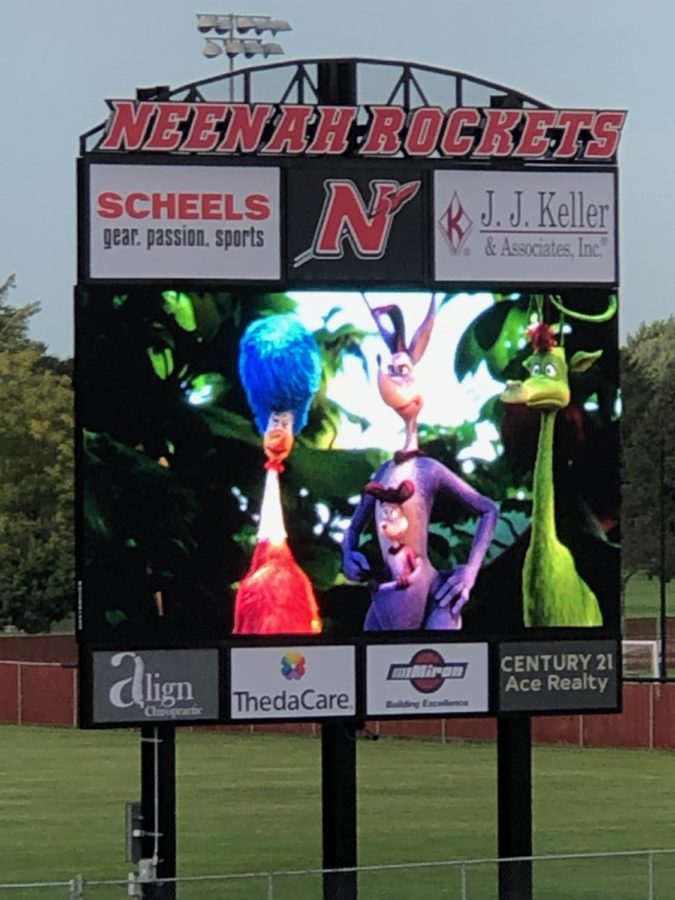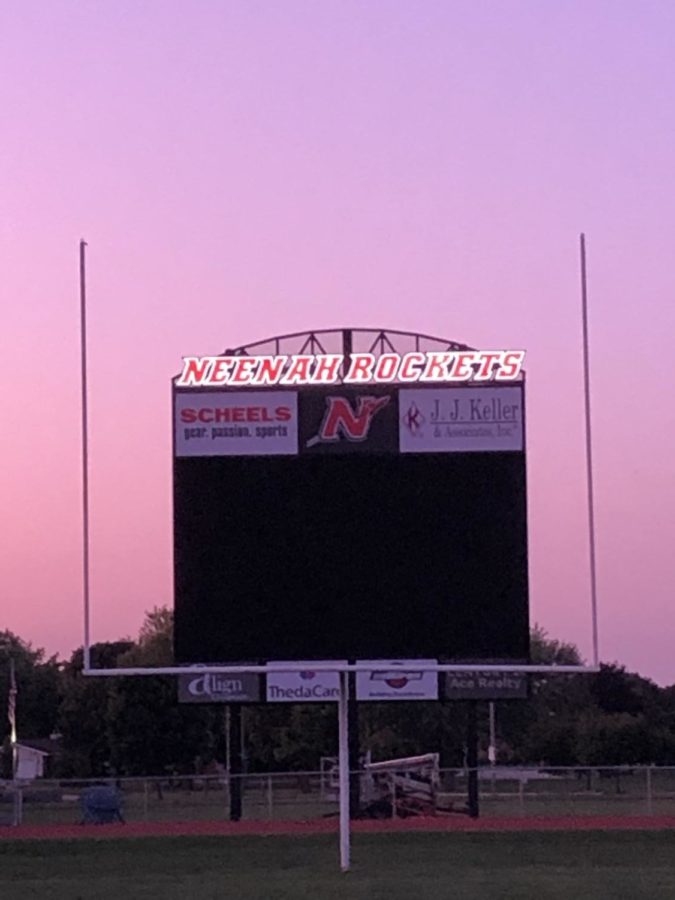Jumbotrons Opening Gateway to Other Improvements
November 24, 2019
Two jumbotrons made their way to NHS sporting facilities prior to the start of the 2019-’20 sporting seasons, according to the Director of Revenue Enhancement Jon Joch.
NHS athletics remains a staple throughout the state of Wisconsin for their tremendous success on the field. This success on the field requires yearly improvements to sporting facilities; ultimately, improvements are a gift to the athletes for their hard work and commitment.
One jumbotron is located in the Ron Einerson Fieldhouse and the other is in Rocket Stadium to improve the experience for athletes, coaches and spectators. Not only that, Neenah hoped these additions will benefit athletics in the long run because ads presented on the jumbotrons will bring extra money for other athletic improvements, according to Mr. Joch.
At the start, the addition of a jumbotron to Rocket Stadium experienced some backlash. Many think an artificial turf field was necessary because the condition of the field continues getting progressively worse. For example, the Neenah Rockets football game versus the Kimberly Papermakers needed to be moved to Kimberly because the field was deemed unplayable.
Neenah football currently is one of two teams in the 10 team Fox Valley Association without an artificial turf field coming from the Fox Valley Association website. Fond Du Lac High School, the other school turfless in the Fox Valley Association, also needed to move a home game to a different location.
Why a jumbotron instead of an artificial turf field?
Joch said: “The jumbotron enhances the fan experience at sporting events . . . revenue from sponsorships will help fund other athletics improvements.” On top of that, the American Football Coaches Association believes high school sports having the opportunity to create ad revenue from jumbotrons will boost all areas of school athletics; also, research showed high school teams have the ability to bring in — over $10,000 a year.
The jumbotrons are scheduled to pay for themselves and eventually turn into a gateway for consistent revenue to benefit Neenah athletic facilities. Coming from this, Joch confirms that N.J.S.D bills each sponsor quarterly to pay off a 5-year lease put on the jumbotrons. But profit is still gained during the leasing period. Then, after the 5-year lease is paid all money from the numerous sponsor will turn into 100 percent profit to improve athletic facilities at NHS.
Sponsorships for jumbotrons run on three different levels: super anchor, anchor and premiere. The differences between levels are locations of branding and the amount paid to N.J.S.D. Joch explains the key differences: super anchors (JJ Keller and Scheels) are present on the top of the jumbotron, anchors (Thedacare, Miron Construction, Align Chiropractic and Century 21) are present on the bottom of the jumbotron, and premiere ( Bergstrom, Kessler, Greene’s Pour House, and many others) scroll continuously on the video screen. This gave various options for businesses to support Neenah athletics, and promote their brand to the Neenah Community.
Joch emphasizes all involved are content with plans to boost game experience and revenue. But N.J.S.D wants to get more out of the jumbotrons, and one way Joch promotes is incorporating the operation and creativity into learning at NHS. Visual production is a popular field emerging in the workforce because the majority of the information presented is digital in today’s world. Therefore, making jumbotrons available to students opens countless opportunities to get their hands dirty in real-life scenarios.



